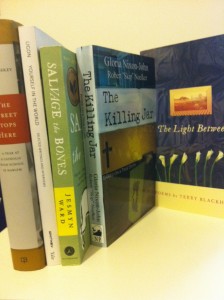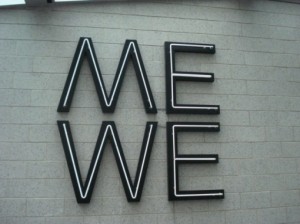 I feel lucky. This summer, the book stack next to me is more than “assigned” reading: they are the works of beloved mentors, or of subjects that are close to me, figuratively and literally.
I feel lucky. This summer, the book stack next to me is more than “assigned” reading: they are the works of beloved mentors, or of subjects that are close to me, figuratively and literally.
First in line is The Killing Jar by Gloria Nixon-John and Robert Skip Noelker, based on the true story of one of the youngest Americans to be charged with murder and sentenced to death. I am not usually a true crime reader (unless you count political coverage), but the authors go deep on the story of this rural Kentucky boy’s upbringing, and the harms he suffered before turning the violence outwards. They also examine the community’s role, or, culpability, at every tragic turn. Gloria is a deeply inspiring teacher of mine, and I’m glad she is getting this story told.
Next: Terry Blackhawk’s book of poems The Light Between. I’ve known and admired Terry for many years now, having worked for her Detroit literary arts nonprofit InsideOut and having read her previous books. This book—which Pete Markus hails as her best—is about the death of a marriage, and the resilience, and the rebirth, of the poet. Such a feeling to hold in my hands the artful results of this traumatic yet blessed time in my friend’s life.
Next: Salvage the Bones by Jesmyn Ward. I’m excited to read this National Book Award-winning novel because it’s a “Katrina novel”, yes, but more so because it’s a family, coming-of-age narrative told from the POV of a young black woman on the Mississippi side of the storm. Continued personal draw: I work on a Katrina oral history project. I am looking forward to taking in Ward’s insights, and witnessing the aftermath through new eyes.
 Turning to art: Yourself in the World: Selected Writings and Interviews by Glenn Ligon, edited by Scott Rothkopf. I still think often of the recent Ligon Whitney show, and I see his “Give Us a Poem” sculpture whenever I pass the Studio Museum, for it is visible from the street. I flipped through this book Harlem Flo’s gift shop and thought, I want to know more about Ligon. So I’m reading.
Turning to art: Yourself in the World: Selected Writings and Interviews by Glenn Ligon, edited by Scott Rothkopf. I still think often of the recent Ligon Whitney show, and I see his “Give Us a Poem” sculpture whenever I pass the Studio Museum, for it is visible from the street. I flipped through this book Harlem Flo’s gift shop and thought, I want to know more about Ligon. So I’m reading.
Finally, turning around (literally) to Rice High School—or, the building that housed it—that stands behind my apartment. This Catholic high school closed down last year. Yet, I’m mesmerized by this building that keeps its lights on all night long—or at least enough of them to create a moody nighttime checkerboard. I stand in my kitchen and stare into floor after floor of windows and I wonder about the history, the ghosts. So I ordered: The Street Stops Here: A Year at a Catholic High School in Harlem by Patrick J. McCloskey. Word is, a new charter school is going to take over the building. But before that happens, I will learn about the highs, and maybe the lows, of this once great institution.
–Stacy Parker LeMelle

